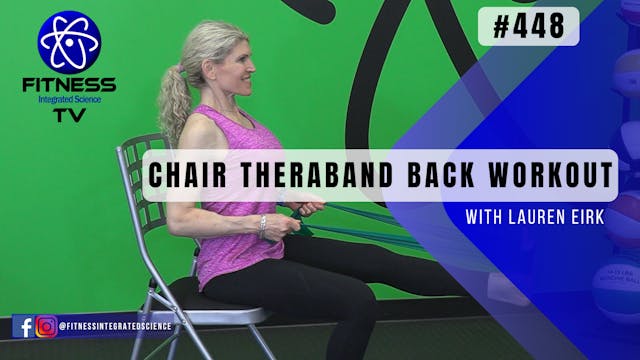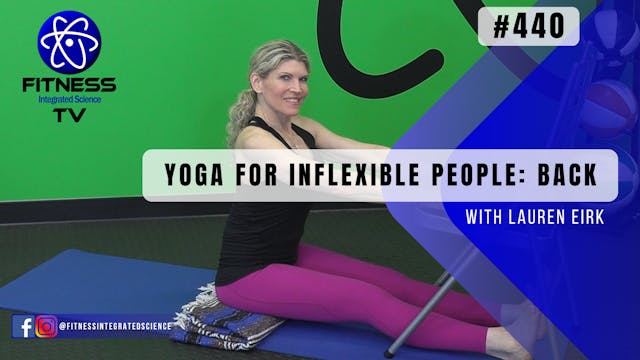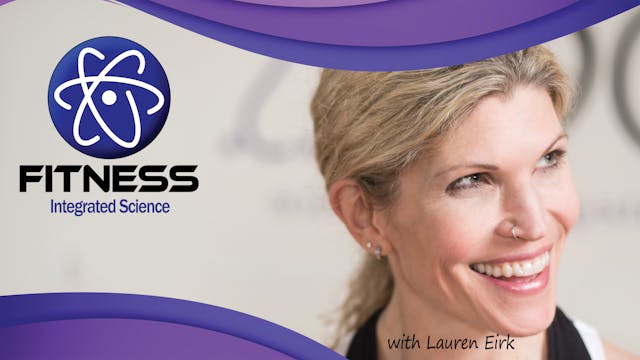On Day 4 of the mobility series, we will look to strengthen the muscles involved in pulling things towards our body. The motions include shoulder extension, shoulder abduction / retraction, and elbow flexion. Within this, we also look at the spine's involvement in the pull.
We begin by exploring our ability to move shoulders into extension and abduction to investigate our mobility from right to left. Next, we will begin performing some crucial isometric resistance exercises to improve our overall range of motion by activating our muscles. The isometrics will be done from an isolated to integrated approach, with dumbbells and bands to assist. Enjoy some classic Yoga positions throughout. We finish with some loaded dumbbell and Theraband exercises for further strengthening.
As we check our final pulling range of motion evaluation, notice how much better your shoulders can move when trunk extensor muscles are stronger. Regular practice of this mobility workout will help you move better with more speed and efficiency.
Keep in mind that there are many things that affect our pulling ability such as:
1. The strength of our spinal muscles for stabilization
2. The placement and amount of any external loads
3. Our ability to perform on a given day
4. The ability our muscles have to work to shorten to contract to create the pulling motion as well as eccentrically allow for the contraction to stabilize the joint.
5. The amount of motion we have available at any of the involved joints.
6. The position of our wrist and shoulder.
7. The plane of motion we are moving through and whether or not our joints can do this efficiently (wide and narrow arcs)
8. Injury history and joint wear-and-tear. You may have to limit motions with shoulder injuries.
** The importance, though, of pulling your own body to an object, or an object to your body, cannot be overstated. Pulling is a physiological necessity in order to optimize results and avoid injury.
Thus, the act of “pulling” with the upper body is widely considered to be one of the foundational human movement patterns. Most people find bodyweight pulling exercises such as the traditional pull up to be quite daunting. As children, we actually practice more pulling our body up to things vs pulling things to us, as when we are trying to stand up. In fitness, exercises like rows or pull downs at various angles with dumbbells, bands, or bars are essential for developing our back.
Purchase the equipment used in this video from Amazon:
Neoprene Coated Dumbbells: https://amzn.to/3OCSr28
Theraband: https://amzn.to/3c2lfOq
Yoga Mat: https://amzn.to/2ZDSMrH
mc_16
Up Next in Back
-
Video 448 | Chair TheraBand and Back ...
This seated resistance band workout that is not only joint friendly, but allows you to practice the entire routine from a chair! This workout is designed to strengthen and tone the areas of the back and shoulders. Using a TheraBand, we will be anchoring the band under the body and against the ch...
-
Video 440 | Yoga for Inflexible Peopl...
Many people think that Yoga is only for highly flexible people, especially due to the image that we see in marketing. However, with the use of Yoga props, we can make the postures accessible to everyone. Props make feel so much more comfortable, improving one's understanding of the pose.
We wi...
-
Live Event | Alignment-Based Flow Yog...
In this Flow Style Yoga class, experience a rhythmic pased, alignment-focused class. The asanas chosen for this practice include some of the most fundamental backward-bending postures in Hatha Yoga, designed to gently engage spinal and hip extensor muscles
We will begin with a warm up to egage ...




1 Comment